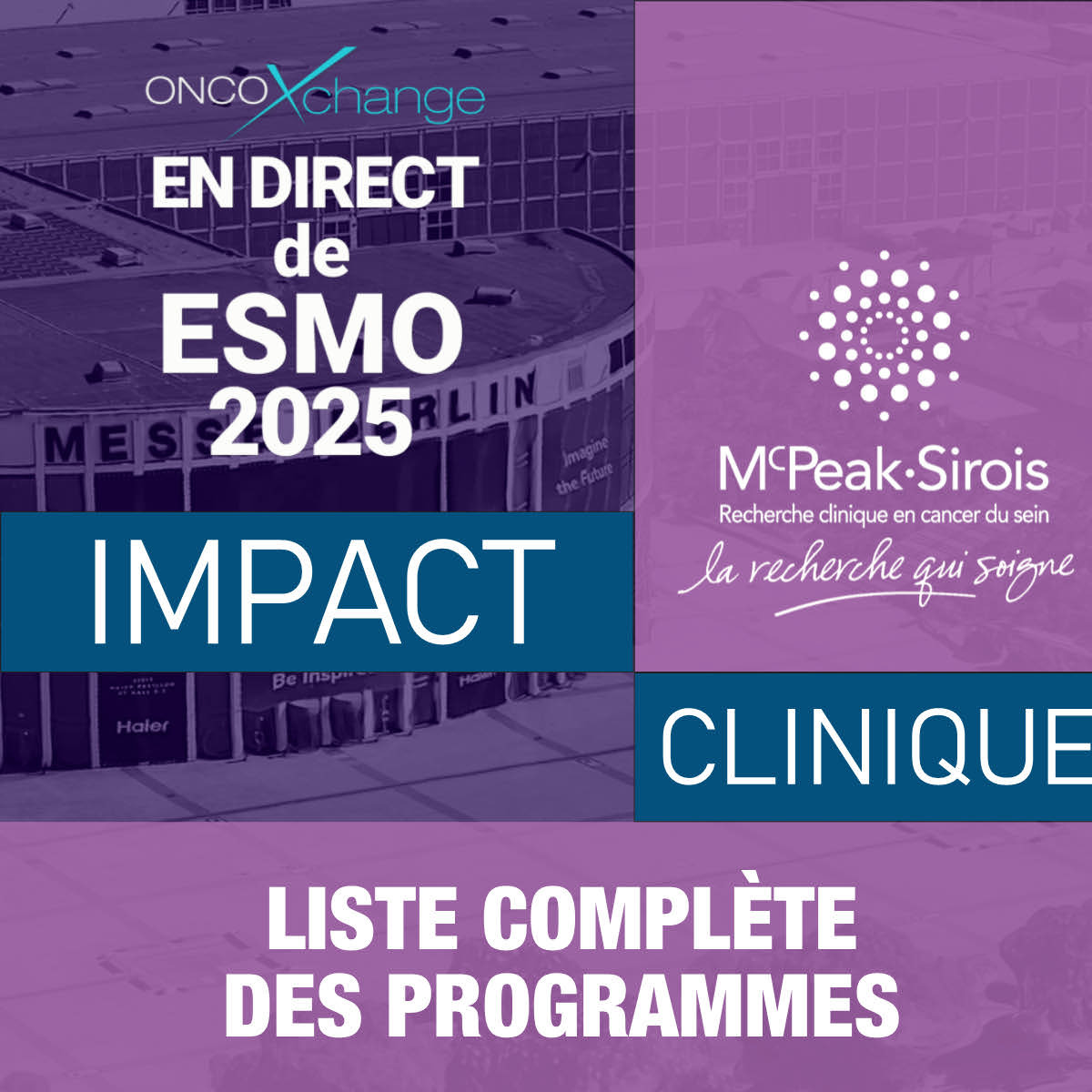
ESMO 2023 - Neoadjuvant immunotherapy improves responses in HR-positive early breast cancer
novembre 2023
By Wayne Kuznar for oncoXchange
For the first time, neoadjuvant immunotherapy has been demonstrated to improve response rates in patients with high-risk hormone receptor (HR)-positive early breast cancer. Data from two phase III studies, presented at the ESMO 2023 Congress, confirmed the activity of adding neoadjuvant immunotherapy to chemotherapy in this population of patients.
“ER+/HER2- breast cancer is a heterogeneous subtype with different clinical behaviors and outcomes with standard treatment,” said presenter Fatima Cardoso, MD, Champalimaud Clinical Centre/Champalimaud Foundation, Lisbon, Portugal. High-risk subpopulations with ER+/HER2- breast cancer require neoadjuvant chemotherapy to achieve pathological complete response (pCR), and “immune checkpoint inhibition may enhance endogenous anticancer immunity when combined with chemotherapy.”
In the KEYNOTE-756 study, the rate of pCR, a co-primary endpoint, was significantly higher in the group randomized to pembrolizumab versus placebo (24.3% vs. 15.6%; treatment difference 8.5, 95% CI; 4.2–12.8; P=0.00005), she reported.
KEYNOTE-756 enrolled 1,278 treatment-naïve patients with early-stage high-risk ER+/HER2- breast cancer who were randomized 1:1 to neoadjuvant pembrolizumab or placebo plus chemotherapy with Paclitaxel, doxorubicin/epirubicin, and cyclophosphamide, followed by adjuvant pembrolizumab or placebo. All patients received endocrine therapy in the adjuvant phase. Results presented were from a first interim analysis performed about 10 months after the final participant was randomized and included all randomized participants.
Median age of participants at baseline was 49 years, about 36% had T3/T4 tumours, 90% overall had nodal involvement, more than 90% in each arm had ER-positive disease, and 76% in each arm were considered PDL-1-postive, defined as a combined positive score ≥1. “I believe that this is a good definition of a high-risk population in this subtype,” she said.
At the time of data cutoff (May 25, 2023), with a median follow-up of 33.2 months, approximately only 2.0% of patients in each arm discontinued neoadjuvant treatment due to progressive disease. At data presentation, 58 patients remained on treatment in the adjuvant phase.
The beneficial effect of pembrolizumab on pCR was consistent across prespecified subgroups including tumour PD-L1 status (CPS ≥1 versus <1), nodal involvement (positive versus negative) and ER positivity (≥10% versus <10%). Results for the other primary endpoint, event-free survival, are still immature.
Participants with ER positive tumours <10% seemed to derive more benefit from pembrolizumab, although the confidence interval is wide and this subgroup constituted only 5% of the total study population. “This is a piece of data that is very important for those of who believe that these tumours behave more as triple negative than as ER-positive,” said Prof. Cardoso.
In patients with triple-negative breast cancer, pembrolizumab is already approved in the neoadjuvant setting based on the positive findings from KEYNOTE-522. Long-term data (median follow-up: 63.1 months) from this study, also presented at ESMO 2023, confirm the durability of pembrolizumab versus neoadjuvant chemotherapy alone on event-free survival (HR, 0.63, 95% CI 0.49–0.81).
Sherene Loi, MD, Peter McCallum Cancer Centre, Melbourne, Australia, presented data from the CheckMate 7FL trial also showing improved pCR rates favoring neoadjuvant nivolumab over placebo in patients with ER-positive/HER2-negative grade 2 or 3 breast cancer.
In the modified intent-to-treat population in CheckMate 7FL, the rate of pCR (ypT0/Tis ypN0) was 24.5% in the arm randomized to neoadjuvant nivolumab plus chemotherapy compared with 13.8% in the arm assigned to placebo and chemotherapy, an absolute difference of 10.5% (OR, 2.05; 95% CI 1.29-3.27; P=0.0021).
CheckMate 7FL is a prospective, randomized, multicenter, double-blind, placebo-controlled phase III trial in which the benefit of nivolumab in combination with neoadjuvant chemotherapy and adjuvant endocrine therapy was investigated in 521 patients with high-risk, ER+ HER2- primary breast. Some 99% of participants had grade-3 histology, more than 40% had clinically stage-3 disease, and 80% were node positive at diagnosis, attesting to the high-risk status of participants. About one third were designated as PD-L1-positive (≥1% CPS). The benefit to nivolumab on pCR was greater in PD-L1-positive patients (44.3% vs. 20.2% with placebo; OR 3.11; 95% CI 1.58–6.11).
The residual cancer burden (RCB) 0-1 rates were 30.7% among patients assigned to nivolumab compared with 21.3% of the placebo arm, for an absolute difference of 9.2% (OR, 1.65). The difference in RCB 0-1 rate with the addition of nivolumab was amplified in patients who were PD-L1-positive (54.5 vs. 26.2%; OR, 3.49).
Discussant Stephen R.D. Johnston, MD, Royal Marsden NHS Foundation Trust & The Institute of Cancer Research, Chelsea, London, U.K. noted that patients with ER+/HER2- early breast cancer tend to have a better prognosis, so the added toxicities of immunotherapy must be considered “because we still have endocrine/targeted therapy options for these patients in the adjuvant setting.”
Prof. Johnston said that the improvement in pCR with pembrolizumab in KEYNOTE-756 “is not dramatic, and, as these are early data, we do not yet know if this is predictive of enhanced post-surgical event-free survival, although the pCR endpoint in neoadjuvant therapy is generally a predictor of overall outcome. As expected, pCR rates with chemotherapy are typically very low, representing the heterogeneity of HR-positive breast cancer, which tends to be treated with hormonal and targeted treatments.”
At this point, it is unclear whether the improved pCR rates observed in KEYNOTE-756 and CheckMate 7FL will translate into better event-free survival, he said. Subgroups who may benefit most from neoadjuvant immunotherapy appear to be those patients with higher grade, luminal B, and possibly PD-L1-positive disease, depending on the assay used to measure PD-L1 status.

Commentaires (0)